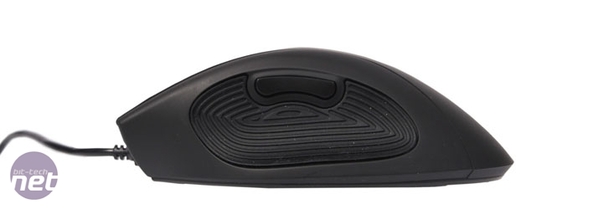Mionix Saiph 3200
Manufacturer: MionixUK Price (as reviewed): £47.99 (inc. VAT)
US Price (as reviewed): N/A
Mice are often dealt a raw hand in life. Some are kept in cages for experiments and forced to conjure cunning plans to take over the world, while others are small and brown and spend their time running away from grey and white cats that plan capture followed by immediate consumption.
Some mice however have it even worse. They are destined to spend their entire lives clenched mercilessly in the sweaty hands of gamers with their buttons being eagerly hammered and subjected to occasional high-speed voyages across the room that end abruptly at the wall on the far side. It’s a tough life for mice, no doubt about it.
The Saiph 3200 from Mionix falls into the latter category of hard done by rodents, though it doesn't look like remarkably prepared for the inevitable abuse it'll suffer in its lifetime. One of the first things you notice about it in fact is its utterly generic aesthetic qualities. The company seems to have taken inspiration from (or ripped off depending on which way you look at it) Razor, but the implementation lacks Razor’s curvy goodness and is instead just a bit dull.
The generic shape of the mouse does mean that it can accommodate different styles of grip though, so whether you tend to ‘finger-tip’ or ‘palm’ your mouse you’re unlikely to find it too uncomfortable. The cut out on the right hand side of the mouse is a little deep though, which might leave the tips of your ring finger and pinky feeling a bit cut-off.
The Saiph has five programmable buttons, a count which includes the left and right click buttons, and scroll wheel which features a one click button but no rocking. Much like the mouse, the software is basic and looks rather mundane but it does the job just fine as long as you aren't looking beyond the basic requirements.
Each button has a drop-down menu allowing you to assign commonly used PC commands such as ‘ctrl+z’ to a key. You can also add a custom macro to drop-down menu, though no more than that. All of the buttons are standard positions and so aren’t awkward to reach. It's worth being warned though that, although the website claims the Saiph has a braided cable, it's actually a regular plastic one, though it is very long.
The software also allows adjustment of seven DPI settings, each of which can be changed to any number in between 400 DPI and 3,200 DPI. Each pre-set makes the mouse wheel light up in a different colour, which helps keep track of which one is currently active. Always a welcome feature is on-board memory and the Saiph has 16KB of that too, which is useful for storing your DPI and macro settings.
Turning the mouse upside down reveals a screw cap which can be removed to access the adjustable weights which are arranged in a revolver bullet chamber-style arrangement which looks pretty cool. There are nine weights in total, each of which weighs 3g, so you can adjust the weight however you see fit - handy if you've got weak wrists like <redacted>. Ha!
The Saiph has plenty of decent features, especially in regards to DPI settings. The onboard memory means you won’t lose your tweaks if you take the mouse around with you to LAN events or friend’s house and the adjustable weights provide a level of customisability that lets the Saiph keep pace with other, more expensive alternatives. However, the Mionix is utterly void of innovative features and design.
Verdict: If you compare the Saiph with Gigabyte’s Ghost GM-M8000 that we saw recently, then the Ghost has a more original design, customisable buttons, better grip, higher DPI count, can handle more custom macros, three different user profiles, stronger build quality, a braided cable and is around £10 cheaper than the Saiph 3200. With that recent and specific example in mind it's really hard to recommend the Saiph that much.

MSI MPG Velox 100R Chassis Review
October 14 2021 | 15:04












Want to comment? Please log in.